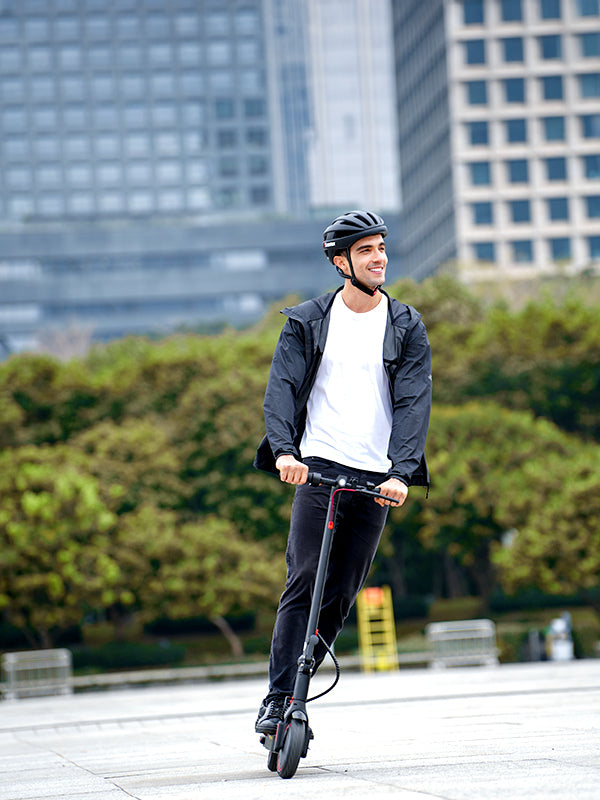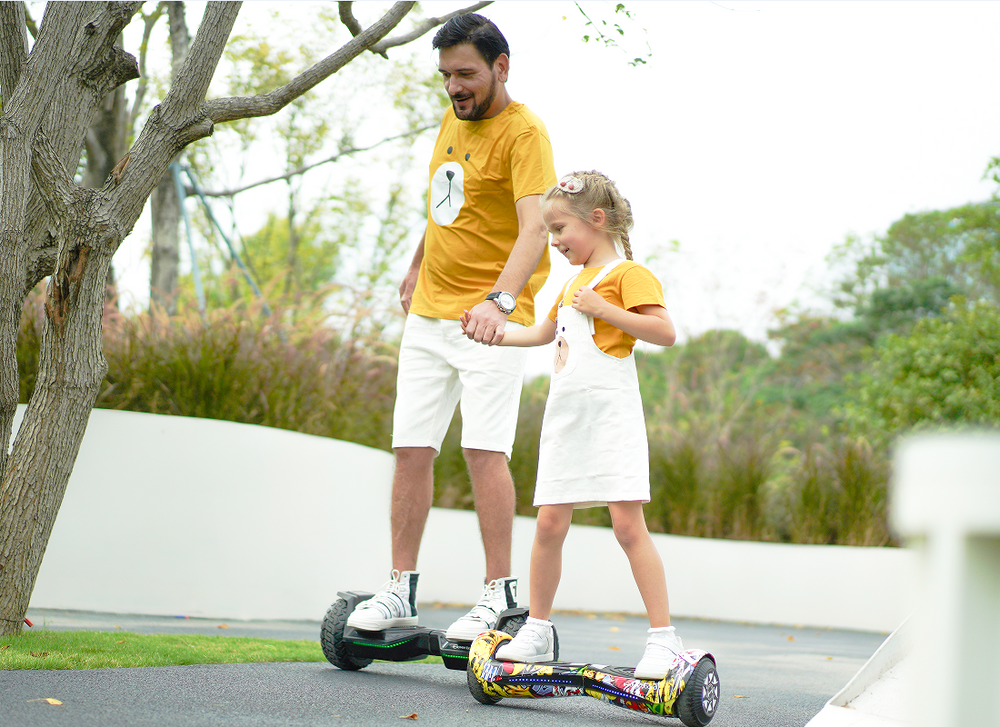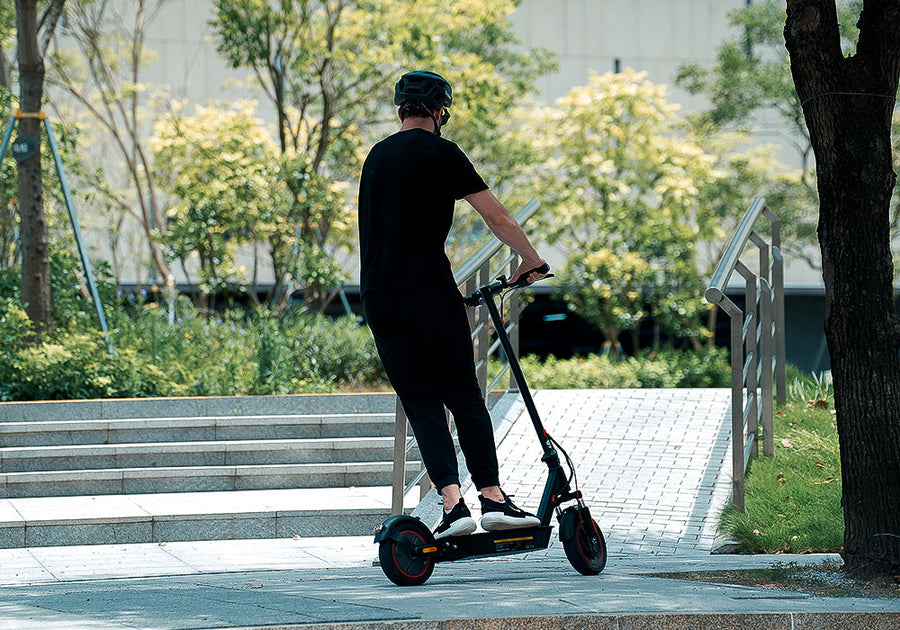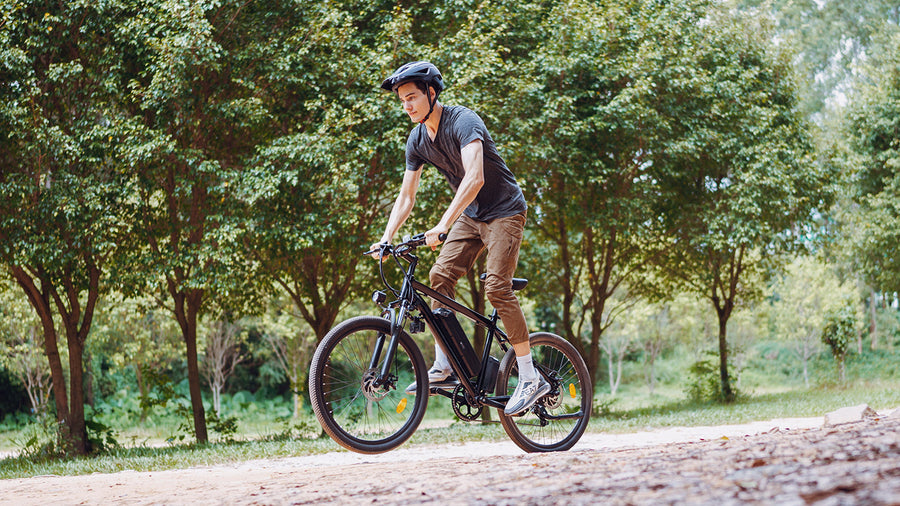![Hoverboard Fire Safety Tips [Stay Safe and Ride Confidently]](http://www.ihoverboard.co.uk/cdn/shop/articles/ihoverboard_new_H1_hoverboard_banner_{width}x.jpg?v=1763348365)
Hoverboard Fire Safety Tips [Stay Safe and Ride Confidently]
Hoverboards have become a popular and fun way to get around, but concerns about hoverboard fire have made safety a top priority for riders in the UK. Modern hoverboards, like those from iHoverboard, are designed with advanced battery management systems, certified chargers, and strict safety standards to minimise risks. By understanding proper charging, storage, and maintenance practices, riders can enjoy a safe, worry-free experience. This guide covers essential hoverboard fire safety tips to keep you confident on every ride.
Why Hoverboard Fire Concerns Are Mostly a Thing of the Past
A few years ago, the news often mentioned hoverboard fire incidents. These early cases were mostly linked to cheap, unregulated imports that used low-quality batteries and unsafe chargers. Fortunately, that’s no longer the case.
Today’s hoverboards are built under strict UK safety regulations and improved technology standards, making them far safer and more reliable than before. Here’s why hoverboard fire concerns are now largely behind us:
1. Strong UK Safety Regulations
Modern hoverboards sold in the UK must meet UKCA and CE safety standards.
These certifications ensure that every model has been tested for electrical stability, battery quality, and fire safety.
Brands like iHoverboard go even further, using UL 2272-certified electrical systems, which means every battery and internal component has passed detailed fire and heat-resistance tests.
2. Advanced Battery Protection
Early hoverboards often used poorly made batteries that could overheat or short-circuit.
Today’s hoverboards use high-quality lithium-ion cells with built-in safety systems that:
-
Prevent overcharging and overheating
-
Balance voltage automatically
-
Stop charging when the battery is full
These improvements eliminate the main causes of hoverboard fire risks that existed years ago.
3. Better Chargers and UK-Plug Safety
One of the biggest past issues was unsafe chargers.
Modern chargers from trusted brands like iHoverboard now include:
-
A fused UK three-pin plug (BS 1363)
-
Stable voltage output designed for hoverboard batteries
-
Heat-resistant components tested for safety
This means users no longer need to worry about using mismatched or unsafe power sources.
4. Smarter Consumer Awareness
Today’s hoverboard riders are more informed than ever. Simple steps like:
-
Charging only on hard, non-flammable surfaces
-
Avoiding overnight charging
-
Using the original charger only
… all help maintain battery health and reduce risks even further.
5. Reliable, Certified Brands
Buying from trusted UK brands makes a major difference.
At iHoverboard, every model is built with certified parts, smart battery management systems, and UK-compliant chargers. Each hoverboard is tested before shipment to ensure it meets national fire and electrical safety standards.
Safe, Tested, and Ready to Ride
Thanks to modern engineering, safety testing, and responsible use, hoverboard fire concerns are mostly a thing of the past. When you choose a trusted name like iHoverboard, you’re choosing a hoverboard designed for safety, reliability, and long-lasting fun — giving you complete peace of mind on every ride.
Understanding Hoverboard Battery Safety
The battery is the heart of every hoverboard. It powers your ride, keeps you moving smoothly, and determines how long you can enjoy each session. But because hoverboards rely on lithium-ion batteries, it’s important to understand how these power cells work — and how to keep them safe.
Modern hoverboards, especially those from iHoverboard, use high-quality, certified battery systems designed with multiple layers of protection. Here’s what makes today’s hoverboard batteries safer, smarter, and more reliable than ever before.
1. How Lithium-Ion Batteries Work
Lithium-ion batteries are used in phones, laptops, and electric vehicles — and hoverboards are no different.
They store energy efficiently in small cells and release it evenly while you ride.
However, if made poorly or charged incorrectly, these batteries can overheat or short-circuit. That’s why safety-focused design, strict quality control, and certified components are essential to preventing a hoverboard fire.
Modern hoverboards now include:
-
Protective circuits to stop overcharging
-
Temperature sensors that cut power if the battery overheats
-
Smart Battery Management Systems (BMS) that balance energy use between cells
These innovations greatly reduce the risk of overheating and improve the battery’s lifespan.
2. The Importance of Certified Batteries
Certification is one of the most reliable indicators of safety.
Hoverboards that meet official standards are tested to ensure they don’t overheat, spark, or cause electrical faults.
Key safety marks to look for in the UK include:
-
UKCA and CE Marks – confirm compliance with British and European safety regulations
-
UL 2272 Certification – verifies the entire hoverboard’s electrical system, including the battery and charger, has been tested for fire and electrical safety
All iHoverboard models meet these high standards, meaning each unit is carefully tested before it reaches you. This provides peace of mind that your hoverboard is safe, reliable, and compliant with every UK requirement.
3. The Role of Quality Chargers
Even the best battery can only stay safe with the right charger.
Low-quality or incompatible chargers can deliver the wrong voltage or fail to stop charging once the battery is full — a major cause of early hoverboard fire incidents.
That’s why iHoverboard only provides BS 1363-certified UK three-pin chargers with built-in fuses and overcharge protection. These chargers:
-
Automatically shut off once the battery reaches full charge
-
Maintain steady voltage to prevent overheating
-
Use heat-resistant materials for safe, everyday charging
Always use the original charger that came with your hoverboard — it’s specifically designed to protect your device’s battery.
4. Smart Charging Habits That Keep You Safe
Even with modern protection systems, user care still matters.
Follow these simple habits to keep your hoverboard battery healthy and safe:
-
Charge on a flat, hard surface — avoid carpets and soft furnishings
-
Never leave the hoverboard charging unattended or overnight
-
Unplug once fully charged (typically after 2–3 hours)
-
Let the hoverboard cool for about an hour after use before charging again
-
Avoid using extension leads or multi-plug adaptors
By practising these habits, you ensure that your hoverboard battery stays cool, stable, and efficient — no matter how often you ride.
5. How iHoverboard Enhances Battery Safety
At iHoverboard, safety is part of every design decision.
Each hoverboard includes:
-
Advanced battery management systems (BMS) to control voltage and temperature
-
High-capacity, Grade-A lithium-ion cells tested for durability
-
Short-circuit and overcharge protection
-
UKCA and UL 2272 compliance for complete user confidence
These features make iHoverboard models not just powerful and long-lasting, but exceptionally safe. The focus is always on performance you can trust — without compromising safety.
Safe Power for Every Ride
Modern hoverboard batteries are built with safety at their core. With certified components, intelligent protection systems, and the right charging habits, the chances of a hoverboard fire are extremely low.
When you ride with iHoverboard, you’re powered by advanced battery technology that’s tested, trusted, and designed for total peace of mind — every single time you ride.
Safe Charging and Everyday Use Tips
Even though modern hoverboards are built with advanced safety features, how you charge and use your hoverboard plays a key role in keeping it in top condition. Following a few simple practices not only extends your battery life but also helps eliminate any risk of hoverboard fire.
Whether you’re new to hoverboards or a regular rider, these safety habits are essential for long-lasting, reliable performance.
1. Always Use the Original Charger
Every hoverboard is designed to work with a specific charger that matches its voltage and current.
Using an unapproved or mismatched charger can send too much current into the battery, leading to overheating or long-term damage.
That’s why it’s important to:
-
Only use the original charger provided with your hoverboard.
-
Avoid using generic or third-party chargers that may look similar but lack built-in safety mechanisms.
-
Check that your charger has a fused UK three-pin plug (BS 1363) — a standard feature of all iHoverboard chargers.
These official chargers include overcharge protection and temperature control, helping your battery stay safe while maintaining optimal performance.
2. Never Charge Unattended or Overnight
Leaving your hoverboard to charge overnight might seem convenient, but it’s one of the most common unsafe habits.
While certified hoverboards like those from iHoverboard are built with smart charging protection, it’s always best to supervise charging sessions. This way, if the charger’s indicator light shows the battery is full, you can unplug it right away.
A full charge usually takes around 2 to 3 hours — once done, disconnect it from the power source. Overcharging doesn’t just waste electricity; it can shorten your battery’s overall lifespan.
3. Charge on a Hard, Flat, and Non-Flammable Surface
The safest place to charge your hoverboard is on a solid and heat-resistant surface.
Avoid placing it on carpets, bedding, or sofas, as these can trap heat and reduce airflow.
Ideal surfaces include:
-
Tile or concrete floors
-
Wooden desks or benches (with clearance underneath for ventilation)
Always make sure the area is dry and well-ventilated. Keeping the charger and hoverboard clear of soft materials ensures the battery remains cool throughout charging.
4. Allow Cooling Time Before Charging
After a long or intense ride, your hoverboard battery may feel slightly warm.
It’s best to let it cool for at least 30–60 minutes before plugging it in.
Charging immediately after heavy use can cause the battery to heat up faster, especially if it’s already warm from operation. Allowing cooling time helps maintain battery health and ensures a stable charging process.
All iHoverboard models use advanced Battery Management Systems (BMS) that monitor temperature, but giving your battery a short break adds an extra layer of care.
5. Avoid Extension Leads and Overloaded Sockets
Many users don’t realise that extension cords or overloaded power strips can be a hidden hazard.
These can overheat or cause surges, particularly when multiple devices are plugged in.
For maximum safety:
-
Plug your hoverboard charger directly into a wall socket.
-
Avoid using multi-plug adapters or long extension cables.
-
Keep cables untangled and away from walkways to prevent tripping.
This ensures stable power delivery and reduces any chance of electrical issues during charging.
6. Keep the Area Clear and Ventilated
During charging, make sure the hoverboard and charger are not covered by anything.
Items like clothes, curtains, or towels can block airflow and cause heat buildup.
Leave enough space around the hoverboard for air circulation, and keep it away from direct sunlight, radiators, or heaters.
These simple steps go a long way in preventing overheating and maintaining optimal charging conditions.
7. Inspect Regularly for Signs of Wear
Before every ride, it’s good practice to quickly check your hoverboard for:
-
Any cracks, swelling, or unusual smells near the battery area
-
Loose or damaged cables on the charger
-
Unusual noises or heat while charging
If you notice anything abnormal, stop using the device and contact iHoverboard support for guidance. Never attempt to repair or open the battery yourself.
8. Smart Riding Habits
Battery care doesn’t end at charging — your riding habits matter too.
Here are a few ways to extend performance and reduce battery stress:
-
Avoid riding in extreme temperatures (below 0°C or above 35°C)
-
Don’t drain the battery completely before recharging — aim to recharge at around 20–30%
-
Store the hoverboard at room temperature and keep it partially charged if not in use for a long period
These habits help preserve your battery’s efficiency, ensuring a longer lifespan and a consistent ride every time.
Simple Habits, Maximum Safety
Modern hoverboards are designed with smart safety systems, but your care and attention make all the difference.
By using the right charger, following safe charging practices, and keeping your hoverboard well-maintained, you’ll enjoy years of worry-free performance.
When you choose iHoverboard, you’re not just investing in performance — you’re choosing a brand that prioritises fire safety, durability, and rider confidence with every model.
What to Do If You Suspect a Battery Problem
Even with modern safety features and high-quality components, it’s always smart to stay alert to how your hoverboard performs. Recognising early warning signs can help you avoid potential issues and protect your hoverboard from damage.
While incidents like a hoverboard fire are extremely rare with today’s certified models, knowing what to do if something doesn’t seem right gives you peace of mind and keeps you safe.
Here’s how to spot possible battery problems — and the right steps to take.
1. Recognise Early Warning Signs
Hoverboard batteries are built to last, but like all electronics, they can sometimes show signs of wear or malfunction.
Watch out for these indicators:
-
Unusual heat: The hoverboard or charger becomes excessively hot, even when not in use.
-
Strange odours or smoke: A burnt or chemical smell is an immediate warning sign.
-
Swollen casing: The battery area looks bloated, or panels don’t fit as they used to.
-
Unstable charging: The charger light flickers, or the hoverboard won’t hold a full charge.
-
Sudden power loss: The hoverboard cuts off unexpectedly during use.
If you notice any of these, stop using the hoverboard immediately and move it to a safe, open area away from flammable items such as curtains, carpets, or furniture.
2. Disconnect and Relocate Safely
If you suspect a battery fault:
-
Unplug the charger right away if it’s connected.
-
Power off the hoverboard completely.
-
Move it carefully to a non-flammable surface, such as a concrete or tiled floor, preferably outdoors or in a garage.
-
Keep it away from people, pets, or anything that could catch fire.
Do not attempt to open the hoverboard casing or battery compartment. Batteries contain chemicals and electrical components that require professional handling.
3. Contact Customer Support or a Qualified Technician
Once the hoverboard is in a safe place, contact the manufacturer or authorised support team for help.
For example, iHoverboard’s customer support can guide you through:
-
Diagnostic steps to identify the problem
-
How to safely dispose of or replace the battery if needed
-
Warranty coverage and service options
Never buy random replacement batteries or chargers online — always use parts supplied by the original manufacturer. Certified replacements ensure compatibility and preserve your hoverboard’s safety certification.
4. What to Do in Case of Smoke or Fire
While hoverboard fire incidents are now extremely rare, it’s important to know how to act calmly if one does occur.
If you see smoke, sparks, or flames:
-
Do not pour water on the hoverboard — lithium-ion batteries react dangerously to water.
-
Evacuate the area immediately and make sure everyone is safe.
-
Close doors behind you to contain the fire.
-
Call 999 and explain that a lithium-ion battery is involved.
-
Wait for the fire service to arrive — firefighters are trained to handle these situations safely.
Once the area is safe and the incident is over, contact your local waste authority or iHoverboard support for proper disposal instructions.
5. Prevent Future Battery Problems
Prevention is the easiest and safest approach.
To keep your hoverboard battery in good condition:
-
Charge only with the official charger supplied with your hoverboard.
-
Avoid overcharging — unplug once the indicator light turns green.
-
Store at room temperature, away from direct sunlight or freezing conditions.
-
Recharge occasionally during long periods of storage (every 1–2 months).
-
Inspect the casing and charger cable regularly for signs of damage.
By following these simple practices, you dramatically reduce the risk of any battery-related issues while keeping your hoverboard performing at its best.
6. Why iHoverboard Batteries Are Built for Safety
Every iHoverboard model is engineered with advanced battery management systems (BMS) that constantly monitor temperature, voltage, and charge cycles.
These smart systems:
-
Automatically shut off charging when the battery is full
-
Prevent overheating and over-discharge
-
Detect faults early and cut power if necessary
Additionally, all iHoverboard batteries are UKCA and UL 2272 certified, meaning they’ve passed rigorous testing for electrical safety and fire resistance. This ensures every rider enjoys peace of mind with every charge.
Stay Alert, Stay Safe
Battery problems in hoverboards are rare, but being aware of the warning signs helps you act quickly and safely.
With the right steps — unplugging, relocating, and contacting support — you can resolve most issues before they become serious.
Choosing a trusted, certified brand like iHoverboard means you’re already backed by advanced safety technology, reliable batteries, and expert support whenever you need it.
Ride confidently, knowing your hoverboard is designed for safety, quality, and worry-free fun.
How iHoverboard Ensures Fire Safety and Quality
At iHoverboard, safety is built into every step of design and production. Each hoverboard is carefully tested, certified, and equipped with premium components to ensure fire safety and reliable performance for every rider.
1. Certified to UK and International Standards
Every iHoverboard model carries the UKCA and CE safety marks, confirming full compliance with UK and European safety laws.
They’re also UL 2272 certified, which means the electrical and battery systems have been tested for overheating, short-circuits, and fire prevention.
2. Advanced Battery Protection
Each hoverboard features an intelligent Battery Management System (BMS) that continuously monitors voltage, temperature, and charge level.
This system prevents overcharging, overheating, and power surges, keeping the battery stable and extending its lifespan.
3. High-Quality Batteries and Chargers
iHoverboard only uses Grade-A lithium-ion cells with built-in insulation and flame-retardant casing.
Chargers are fitted with a fused UK plug (BS 1363) and automatic shut-off once the battery is full — preventing overheating and other charging risks.
4. Strict Quality Control
Before leaving the factory, every iHoverboard undergoes a full inspection — including battery safety tests, temperature checks, and ride performance trials.
Only units that pass all tests are approved for sale.
5. Continuous Innovation and Support
iHoverboard keeps improving its designs with new safety features and offers responsive UK customer support for maintenance or replacement advice.
iHoverboard Products in Comparison
|
Specification |
||||
| Image |  |
 |
 |
 |
|
Regular Price |
£159.99 |
£199.99 |
£309.99 |
£319.99 |
|
Sale Price |
£78.99 |
£104.99 |
£148.99 |
£158.99 |
|
Wheel Size |
6.5" |
6.5" |
8.5" |
8.5" |
|
Motor Power |
Dual 350W |
Dual 250W (500W) |
Dual 400W (800W) |
Dual 400W (800W) |
|
Battery Capacity |
25.9V 2.6Ah |
36V 2Ah |
36V 4Ah |
36V 4Ah |
|
Top Speed |
6.8 mph (11 km/h) |
7.5 mph (12 km/h) |
7.5 mph (12 km/h) |
9.3 mph (15 km/h) |
|
Range / Ride Time |
40–60 min |
50–70 min |
Up to 12.4 miles (20 km) |
Up to 12.4 miles (20 km) |
|
Charging Time |
2–3 h |
2–3 h |
4–5 h |
4–5 h |
|
Max Weight |
119 lbs (54 kg) |
220 lbs (100 kg) |
220 lbs (100 kg) |
220 lbs (100 kg) |
|
Age Recommendation |
3+ |
6+ |
6+ |
6+ |
|
Tire Type |
Solid rubber |
Solid rubber |
Solid off-road tire |
Solid off-road tire |
|
Self-Balancing |
Yes |
Yes |
Yes |
Yes |
|
Bluetooth Speaker |
Yes |
Yes |
Yes |
Yes |
|
LED Lights |
Multicolor wheels & deck |
LED wheels & body |
LED wheels + body lights |
LED wheels + body lights + RGB side lights |
|
App Control |
No |
No |
No |
Yes |
|
Riding Modes |
1 Mode |
3 Modes (8/10/12 km/h) |
3 Modes (8/10/12 km/h) |
2 Modes (10/15 km/h) |
|
Climbing Angle |
N/A |
N/A |
Up to 10° |
Up to 10° |
|
Product Weight |
10.1 lbs (4.6 kg) |
12.6 lbs (5.7 kg) |
14.3 lbs (6.5 kg) |
14.3 lbs (6.5 kg) |
|
Water Resistant |
Yes |
Yes |
Yes |
Yes |
|
Go Kart Compatibility |
No |
K3 Go Kart |
K3 Go Kart |
K3 Go Kart |
Conclusion
Hoverboards today are safer than ever, thanks to advanced battery technology, certified components, and strict UK safety standards. While early reports of hoverboard fire raised concerns, modern devices from trusted brands like iHoverboard are designed to minimise risks and ensure a reliable, worry-free ride.
By following simple precautions — using the original charger, charging on a safe surface, and performing regular inspections — riders can enjoy their hoverboards with confidence. Choosing iHoverboard means you’re selecting a hoverboard that combines fun, performance, and peace of mind, making every ride safe and enjoyable.
FAQs
1. Are hoverboards a fire risk?
Modern hoverboards are extremely safe when they meet UK and international safety standards. Early reports of hoverboard fire mainly involved poorly made, uncertified devices with low-quality batteries or chargers. Today, brands like iHoverboard use UL 2272-certified electrical systems, UKCA and CE certified batteries, and fused UK plugs, making the risk of fire very low when used correctly.
2. How do I keep my hoverboard from catching fire?
You can minimise any risk by following these simple safety steps:
-
Always use the original charger supplied by the manufacturer.
-
Charge on a hard, non-flammable surface and in a well-ventilated area.
-
Avoid leaving the hoverboard charging unattended or overnight.
-
Allow the battery to cool for 30–60 minutes after heavy use before charging.
-
Regularly inspect the hoverboard and charger for damage, swelling, or unusual smells.
By combining certified products like iHoverboard with these safe habits, you can enjoy a worry-free ride.
3. How many hoverboard fires are there?
Hoverboard fire incidents are now extremely rare in the UK. Most reported cases occurred years ago with unregulated imports that lacked proper safety certifications. With modern standards like UL 2272, UKCA, and CE, and brands like iHoverboard following strict quality control, actual fire incidents are very uncommon.



































































Still, need help? Contact Us: support@ihoverboard.com
What's the option? Check out the option now!
Leave us a message